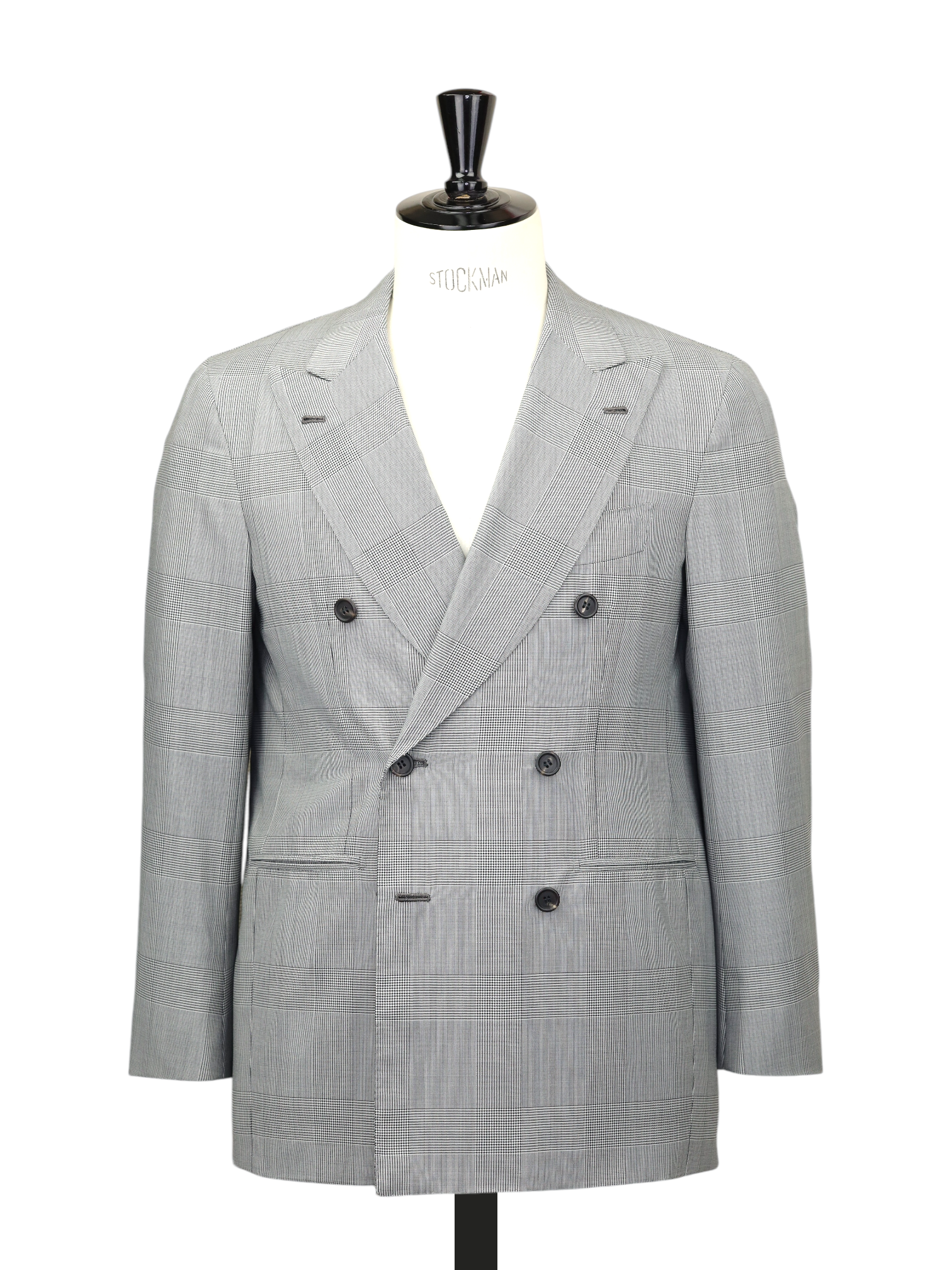
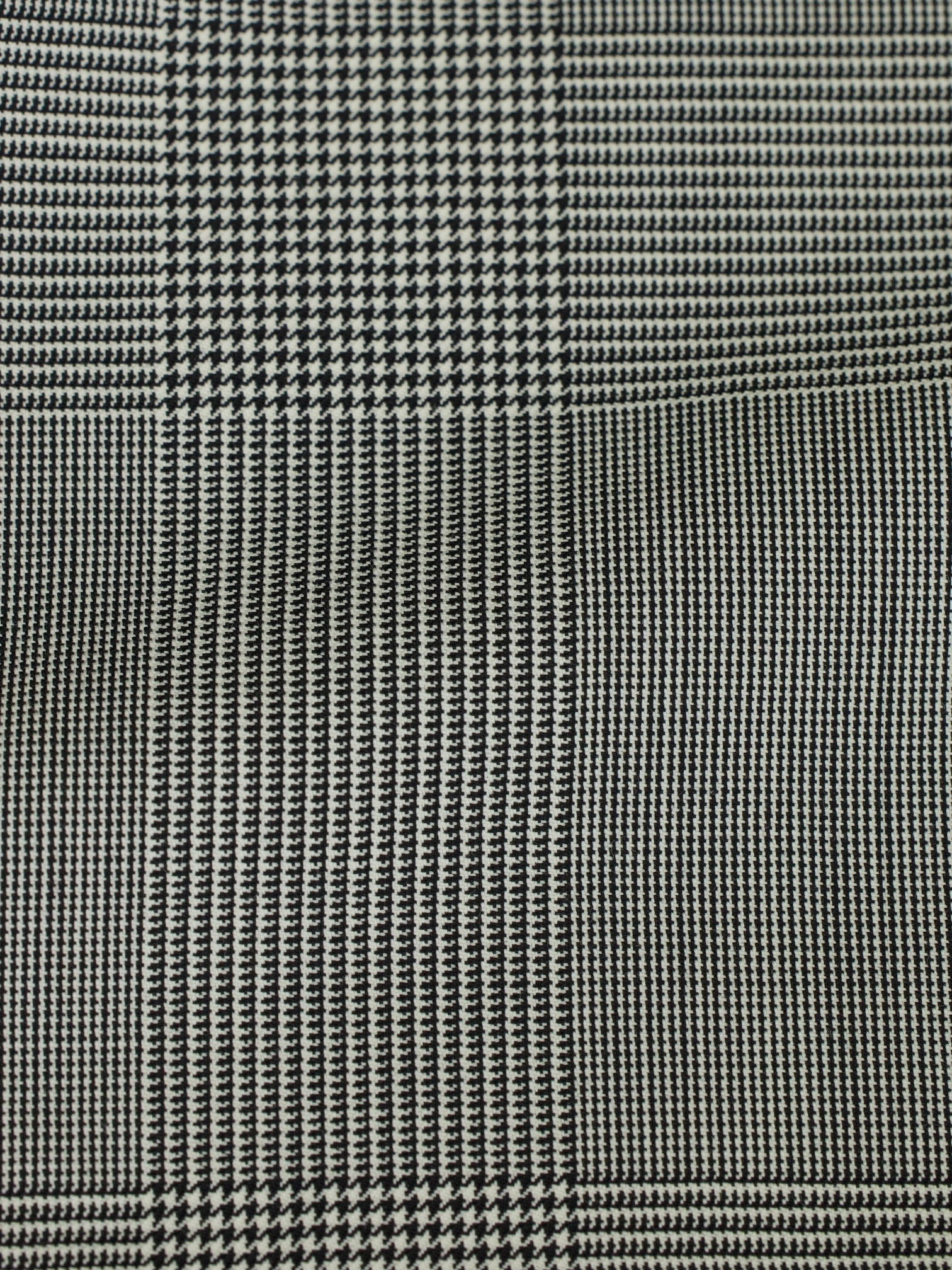
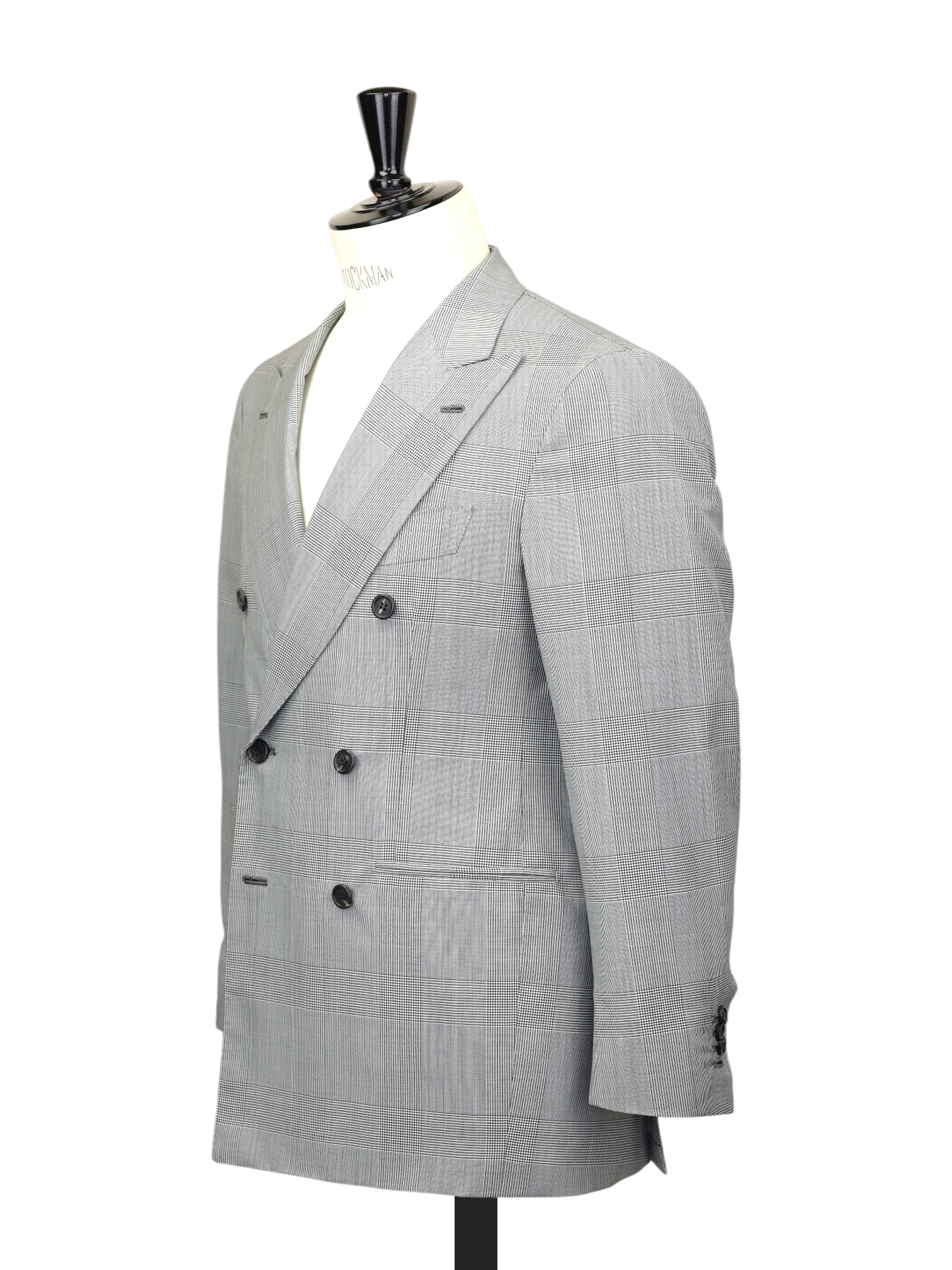
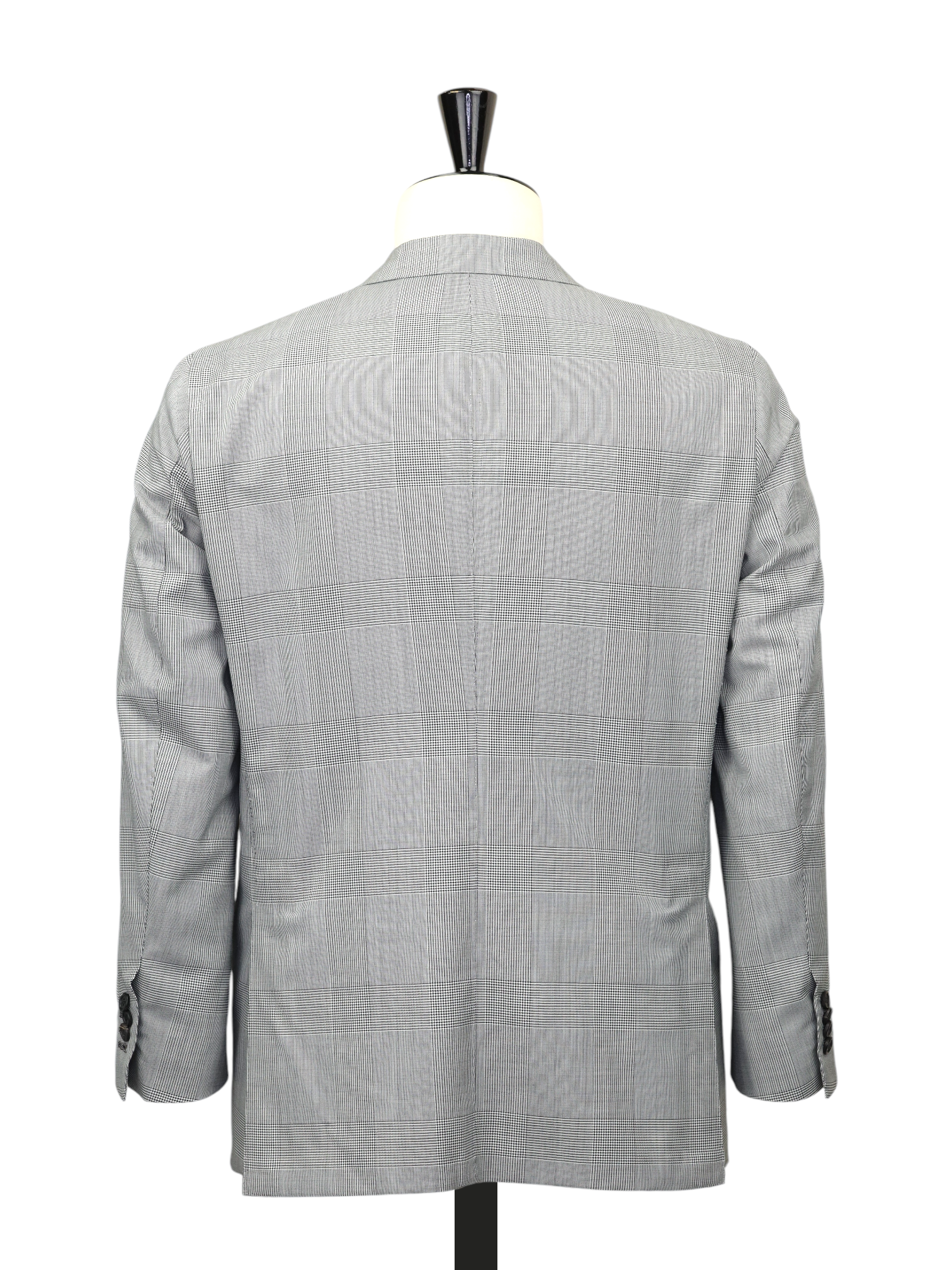
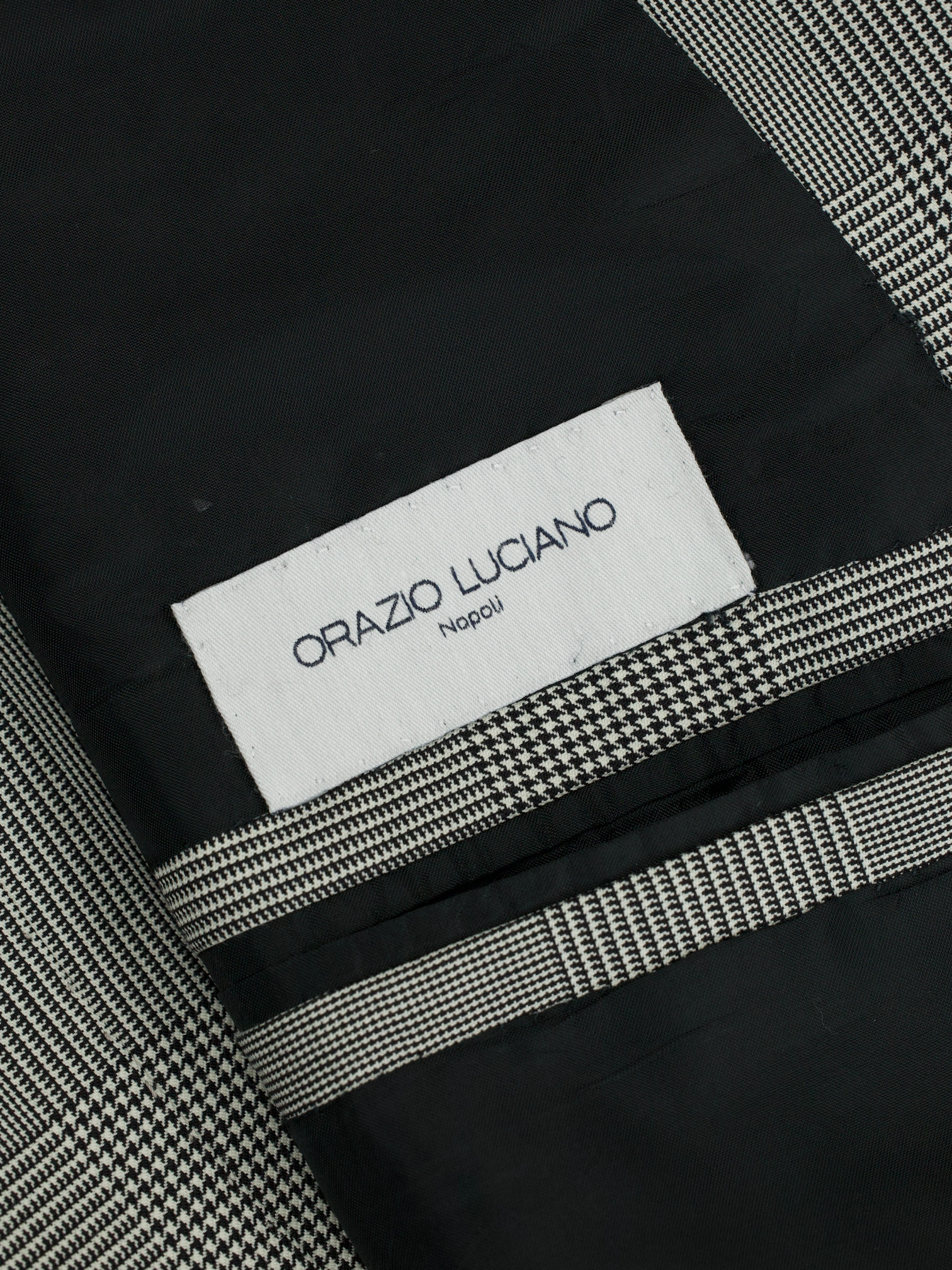
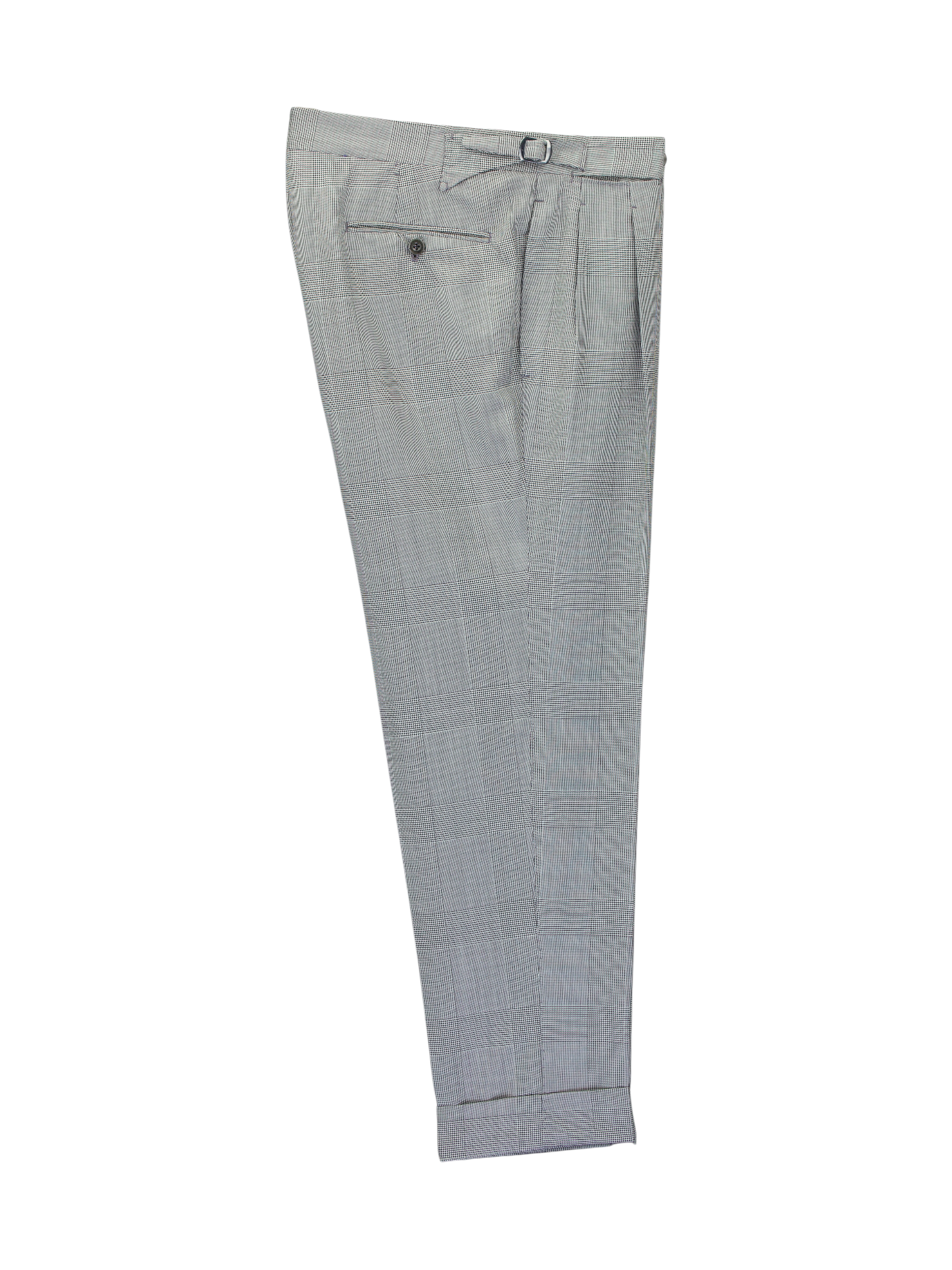
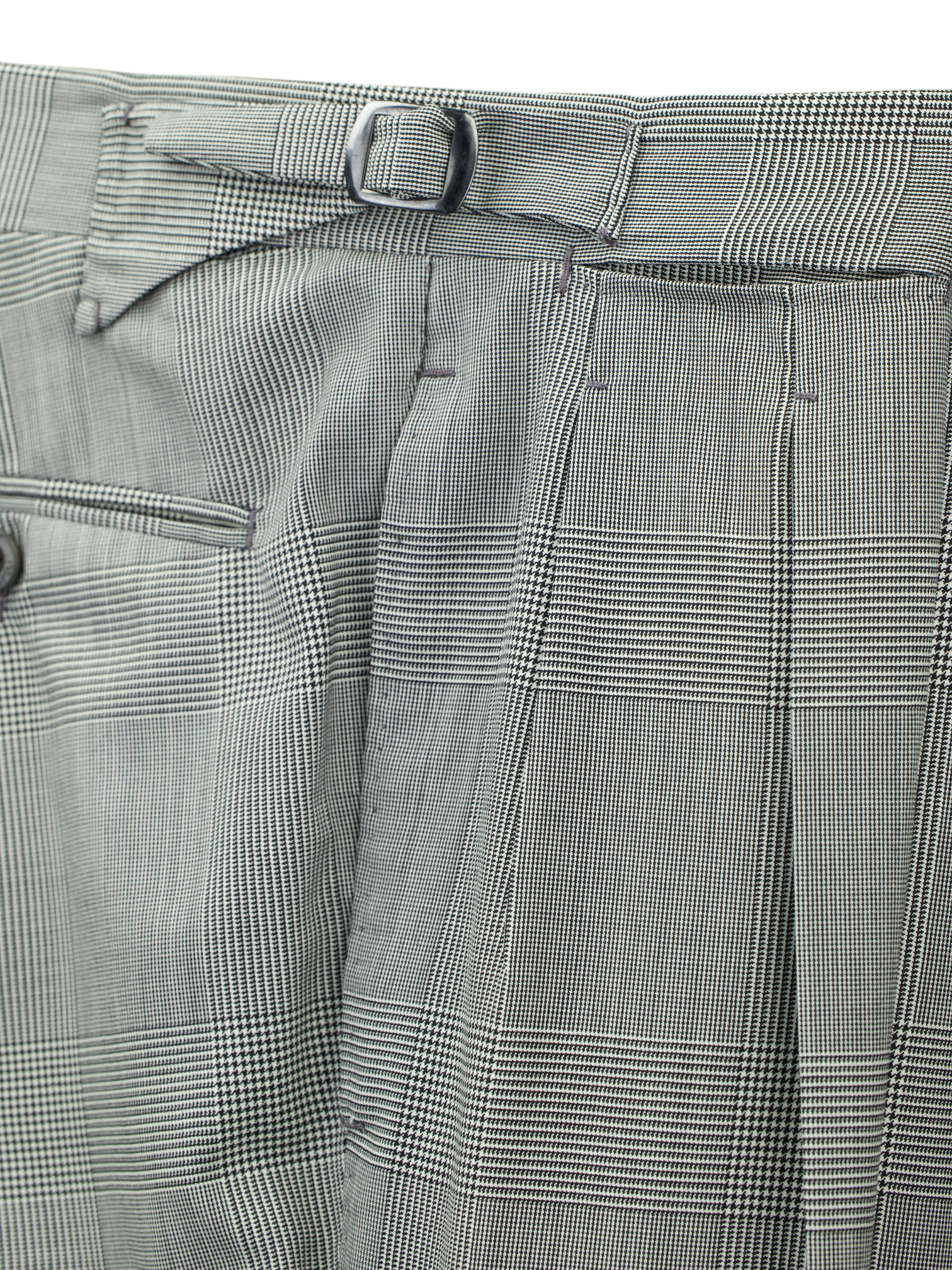
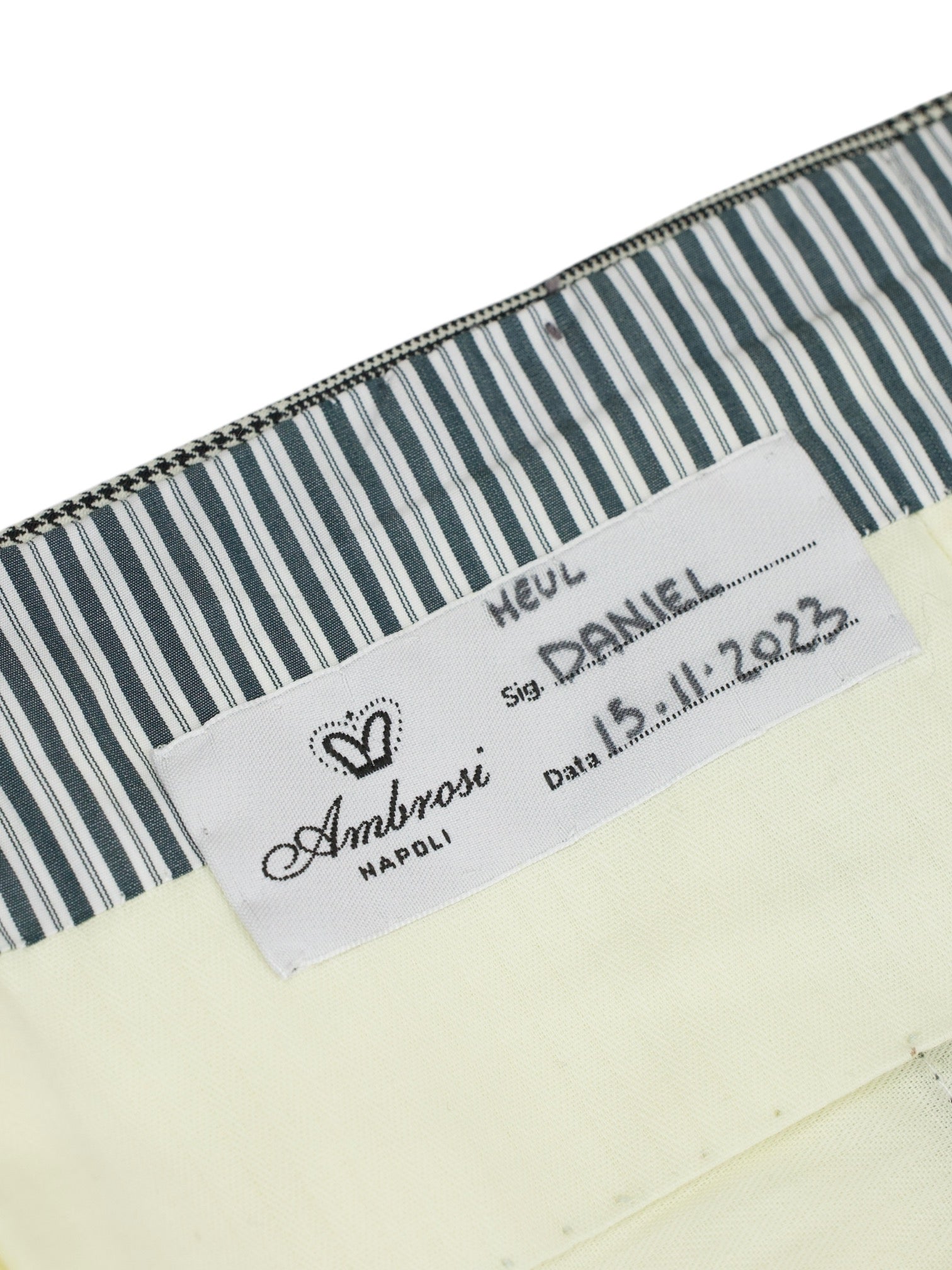
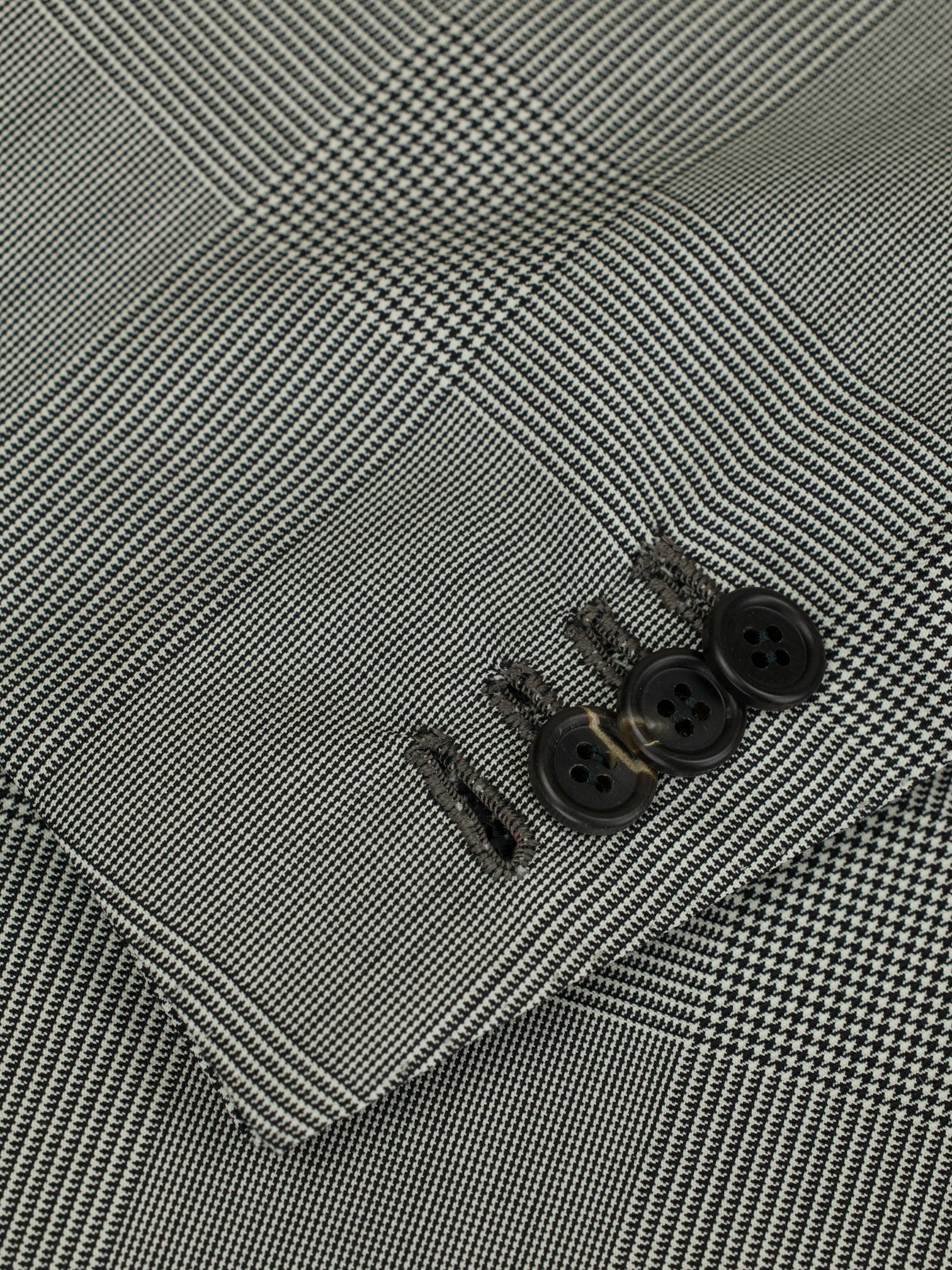
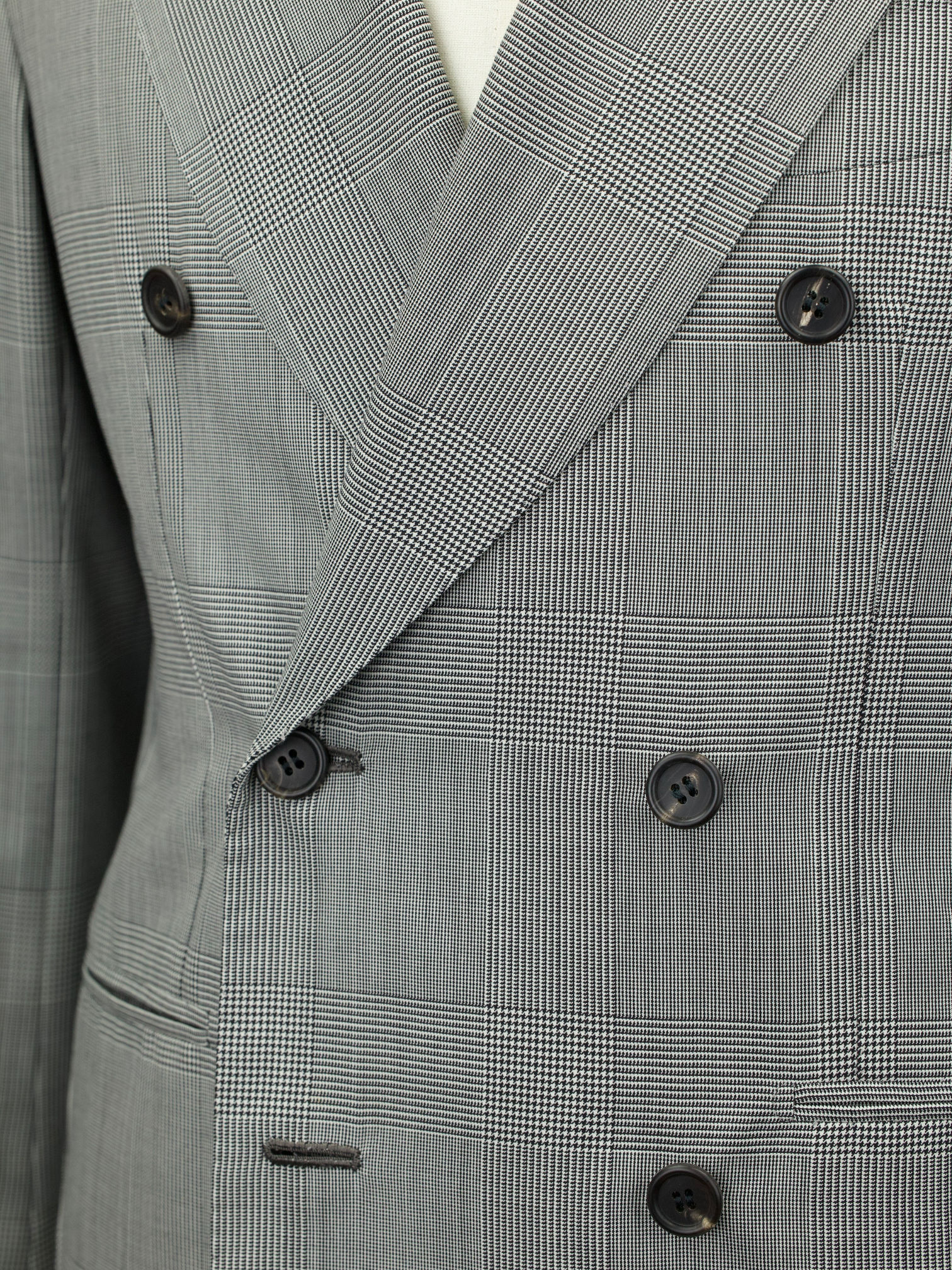
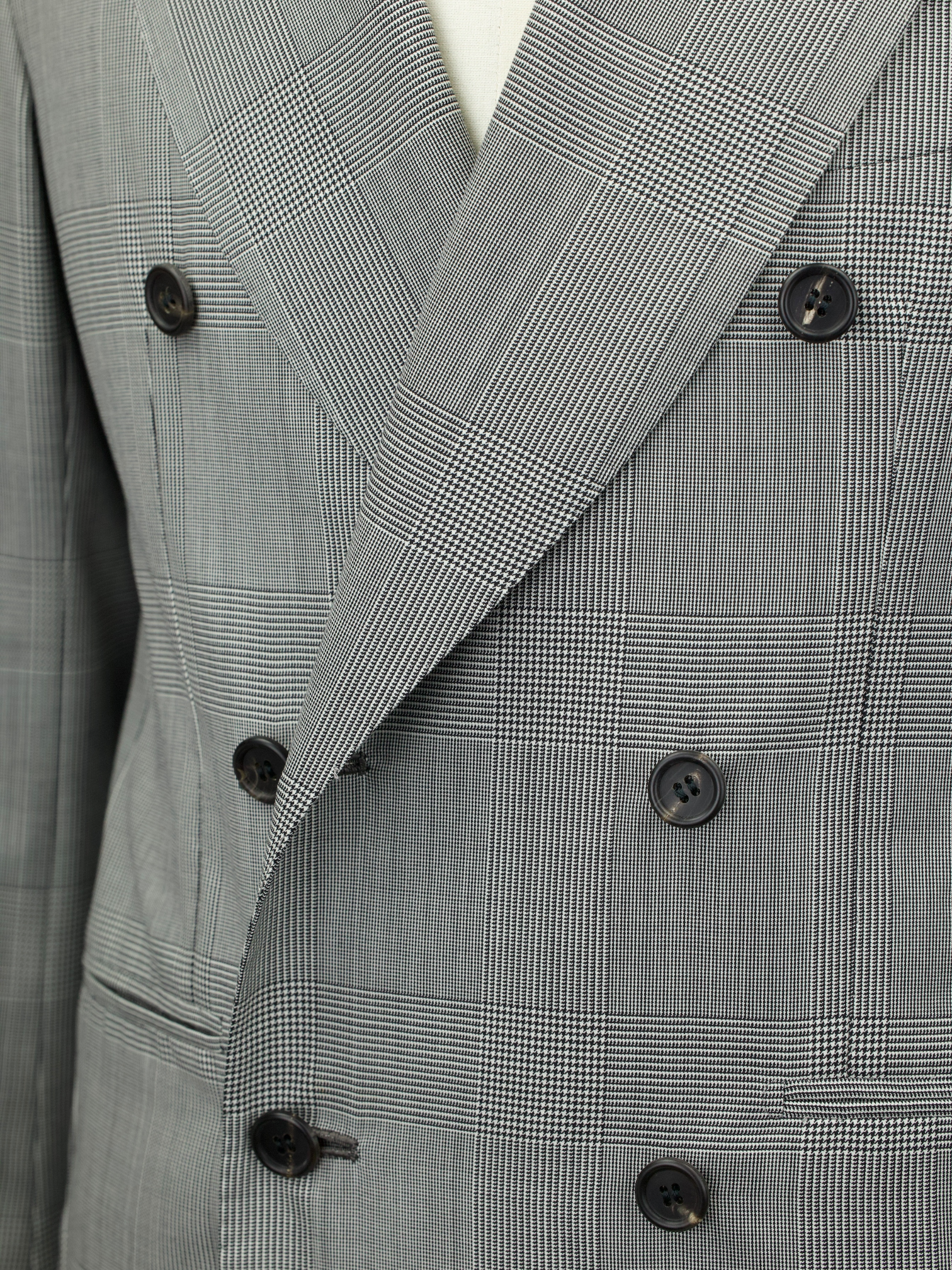
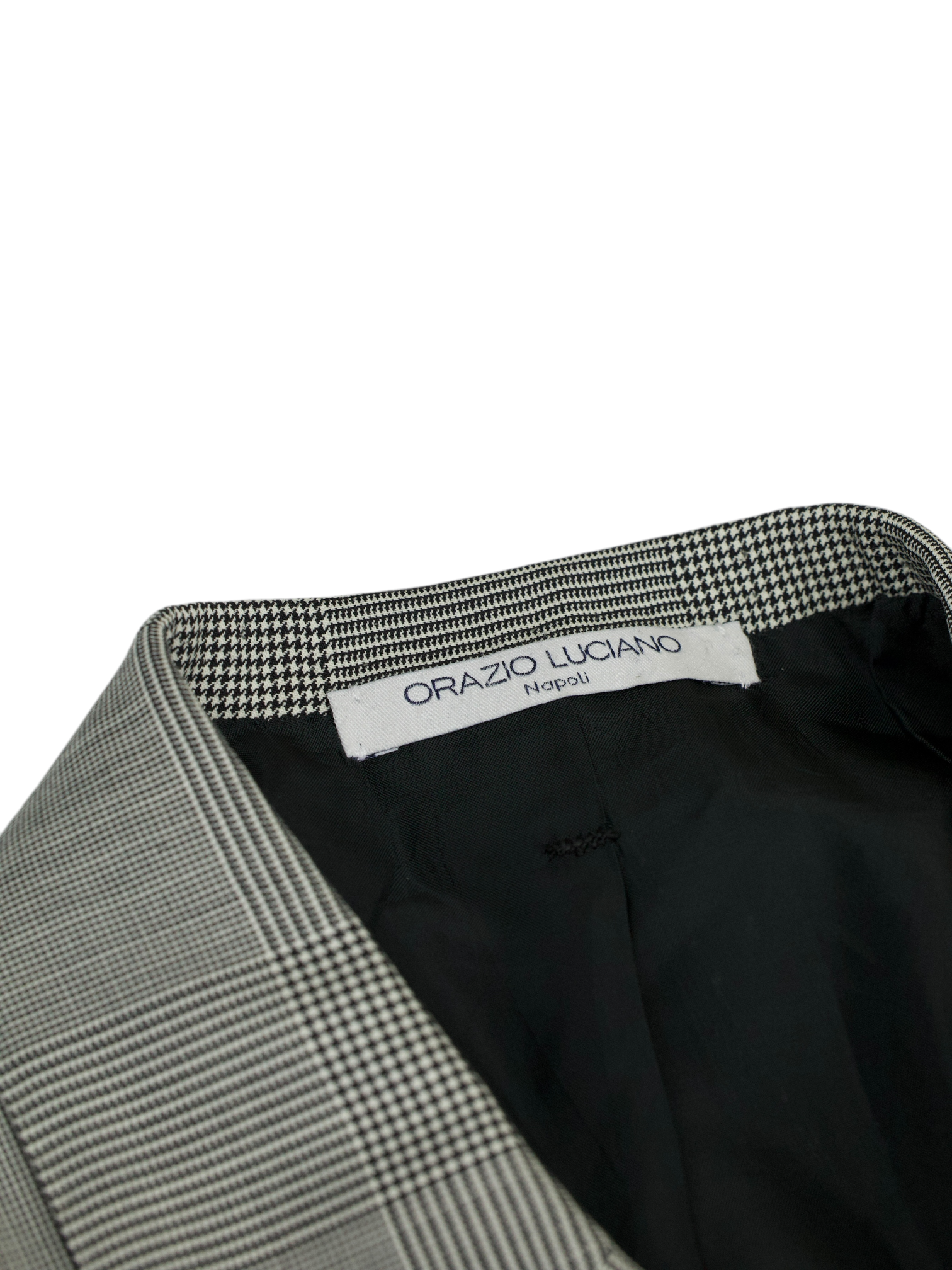
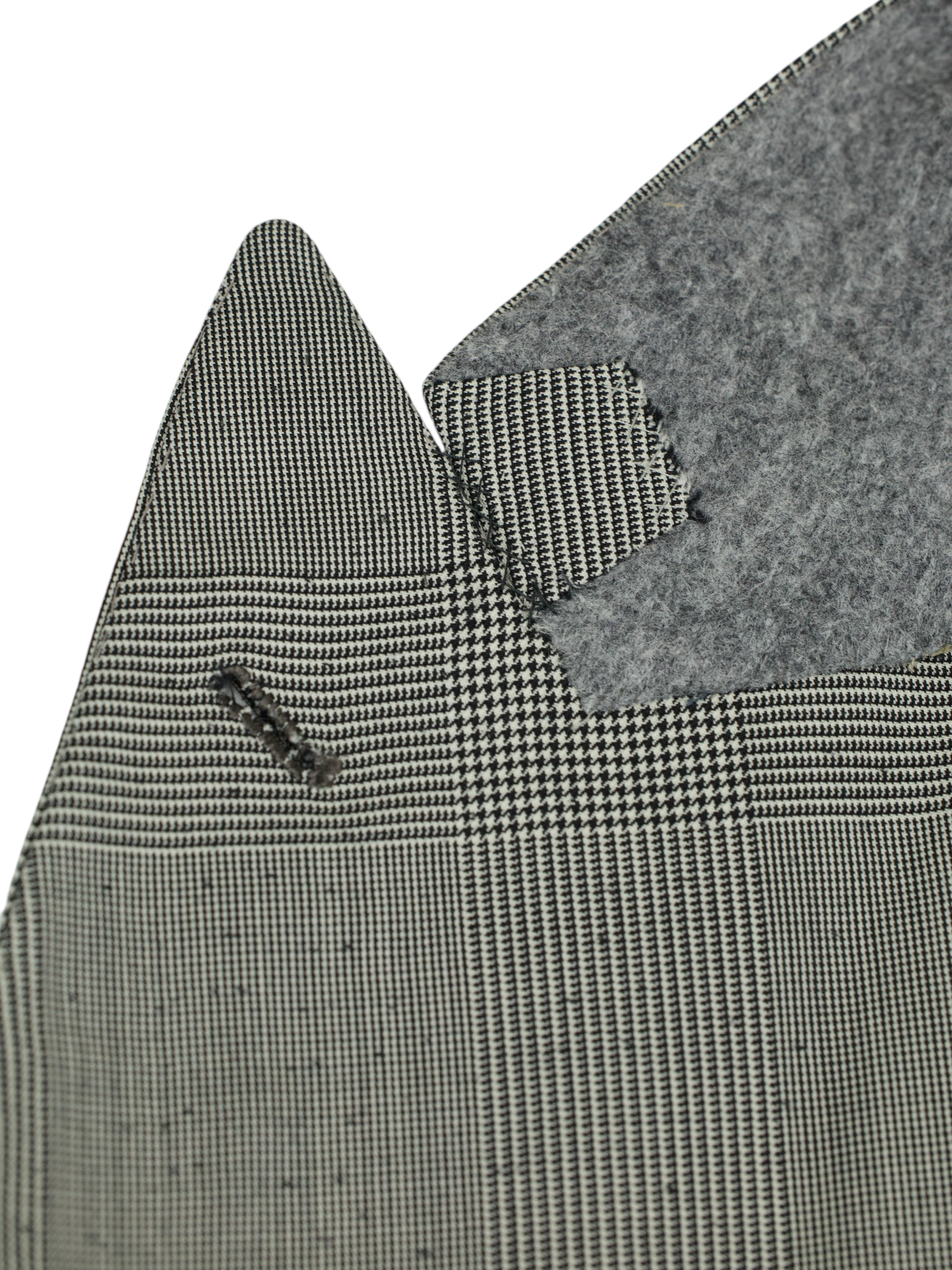
Orazio Luciano & Ambrosi Grey Double-Breasted Prince of Wales Suit
48 IT / 38 US / Medium
Discover the Orazio Luciano Grey Double-Breasted Prince of Wales Suit, a nuanced blend of Neapolitan tailoring and refined British pattern, rendered in a breathable wool fabric with a soft, fluid drape. The grey Prince of Wales check lends the suit timeless character, while the 6-button double-breasted front, sharp peak lapels, and jetted pockets reinforce its bold, sartorial presence. Signature Neapolitan details—such as hand-shaped lapels, soft shoulders, and artisanal buttonholes—enhance the jacket’s natural silhouette. Finished with horn buttons and a half-lined interior, the jacket moves with ease while maintaining elegance across seasons.
A distinctive detail lies in the trousers, crafted not by Orazio Luciano but by Ambrosi Napoli—widely regarded as one of the world’s foremost trouser specialists. Using the same Prince of Wales cloth for perfect continuity, Ambrosi’s tailoring introduces precise double pleats, side adjusters, and classic turn-ups, all shaped with meticulous handwork and an eye for proportion. Known for their sculptural fit and enduring comfort, Ambrosi trousers reflect an uncompromising standard rarely matched in contemporary tailoring. This collaboration brings together two of Naples’ finest ateliers, resulting in a suit of exceptional coherence and character. Discover the elaborated sartorial details below.
Composition: 100% Wool
Color: Grey
Pattern: Prince of Wales Check
See how we measure our sartorial items
Discover the customization possibilities by visiting our tailor alteration guide
Shipping
- Complimentary shipping on orders over €200 (Netherlands), €500 (EU), and €1,000 (rest of world).
- Orders under these amounts: shipping rates depend on your country.
- Customs duties or import fees may apply and are the customer’s responsibility. The courier may charge additional fees.
Returns
- You have the right to return your order within 14 days of delivery.
- If you wish to return an item, please notify us within 48 hours of receiving your order.
- Return shipping is at the customer’s expense.
- A 10% restocking fee will be deducted from your refund for all returns.
Please carefully review all measurements and quality control notes in the listing before purchasing. Return shipments have an environmental and economic impact. For any questions or if you need help, feel free to contact us before placing your order.
General Note: While we inspect each item to ensure its quality, please note that minor imperfections may be present due to the preloved nature of the garments. We strive to represent every item accurately, but subtle signs of wear may sometimes go unnoticed. We appreciate your understanding and commitment to sustainable luxury.
Choose options













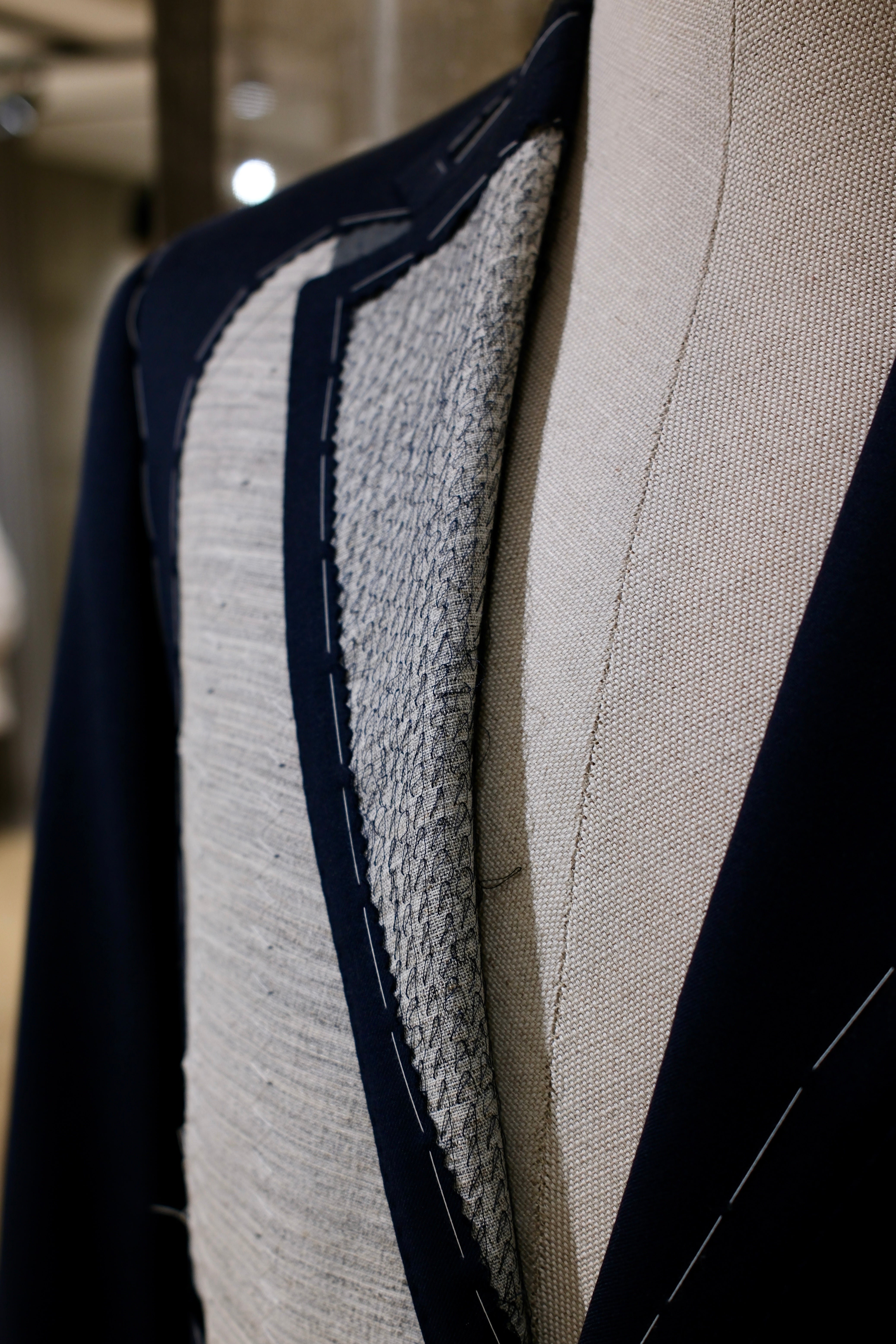
Discover the
Sartorial Details

Full Canvas Construction
A sartorial jacket - or coat - needs an interlining that will help give it shape and mold it. Canvas gives the item a tailored and crafted look. In short, it breathes life into it. Purely technical, canvas is made from either horsehair, wool, mohair or camel hair. It could also be a mix of them all, with varying thickness and weight. The canvas is stitched to the jacket, often by hand, thus making the canvas pieces 'floating' in the middle of the inner and outer cloth. This gives the jacket added flexibility. The canvas runs from the upper parts, all the way down to the end of the jacket. After you wear your canvassed suit for a while, it will begin to take your shape and look incredibly natural.
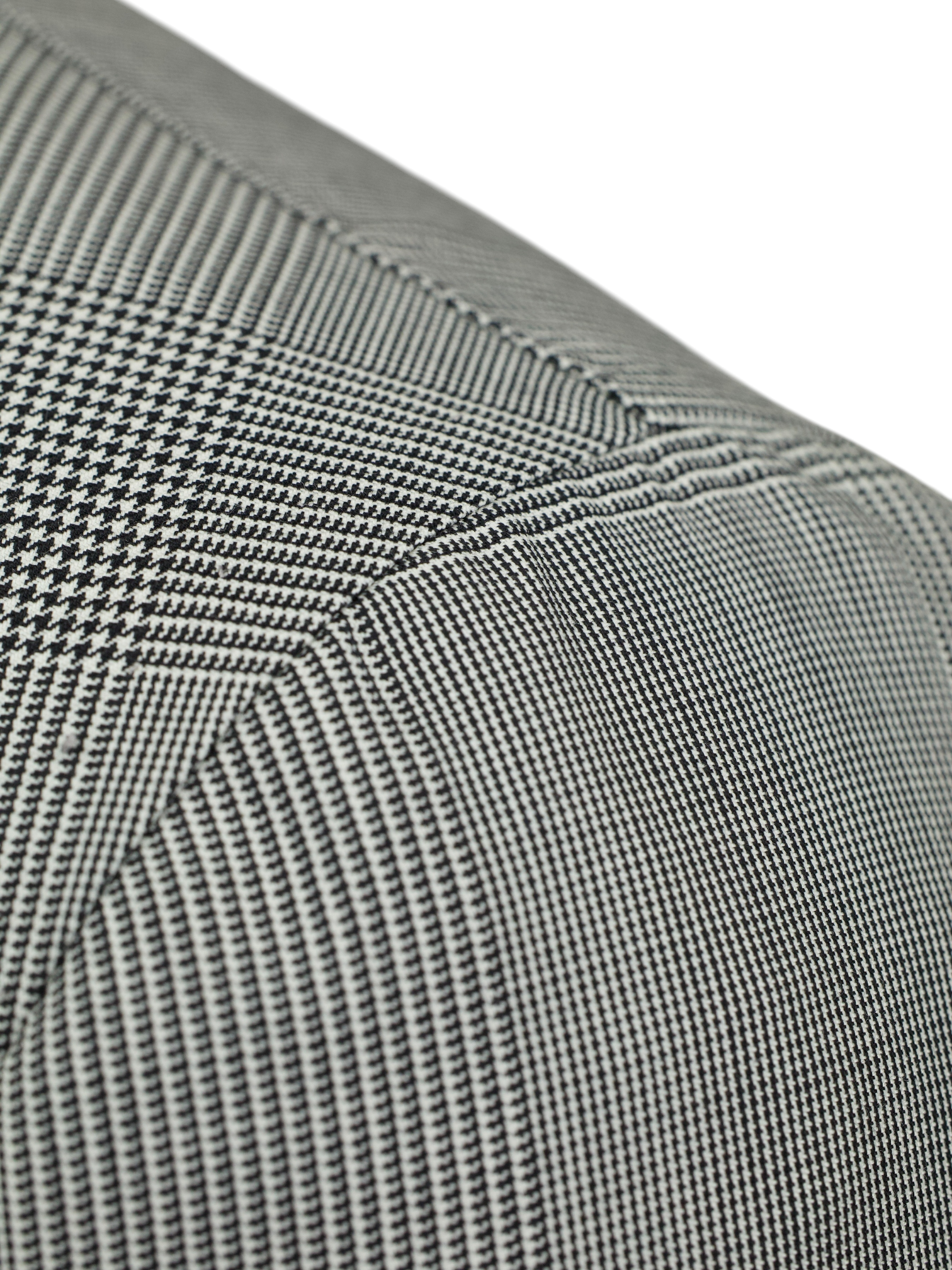
La Spalla Camicia
Spalla Camicia roughly translates to 'shirt sleeve' in Italian and is a shoulder style created and popularized by Neapolitan tailors. The name 'shirt sleeve' was so coined due to the characteristic shirring found at the sleeve's head where the fullness of the larger sleeve collapses. Rather than having the head of the sleeve turned back and stitched inside, the head is lapped under and stitched along the top.
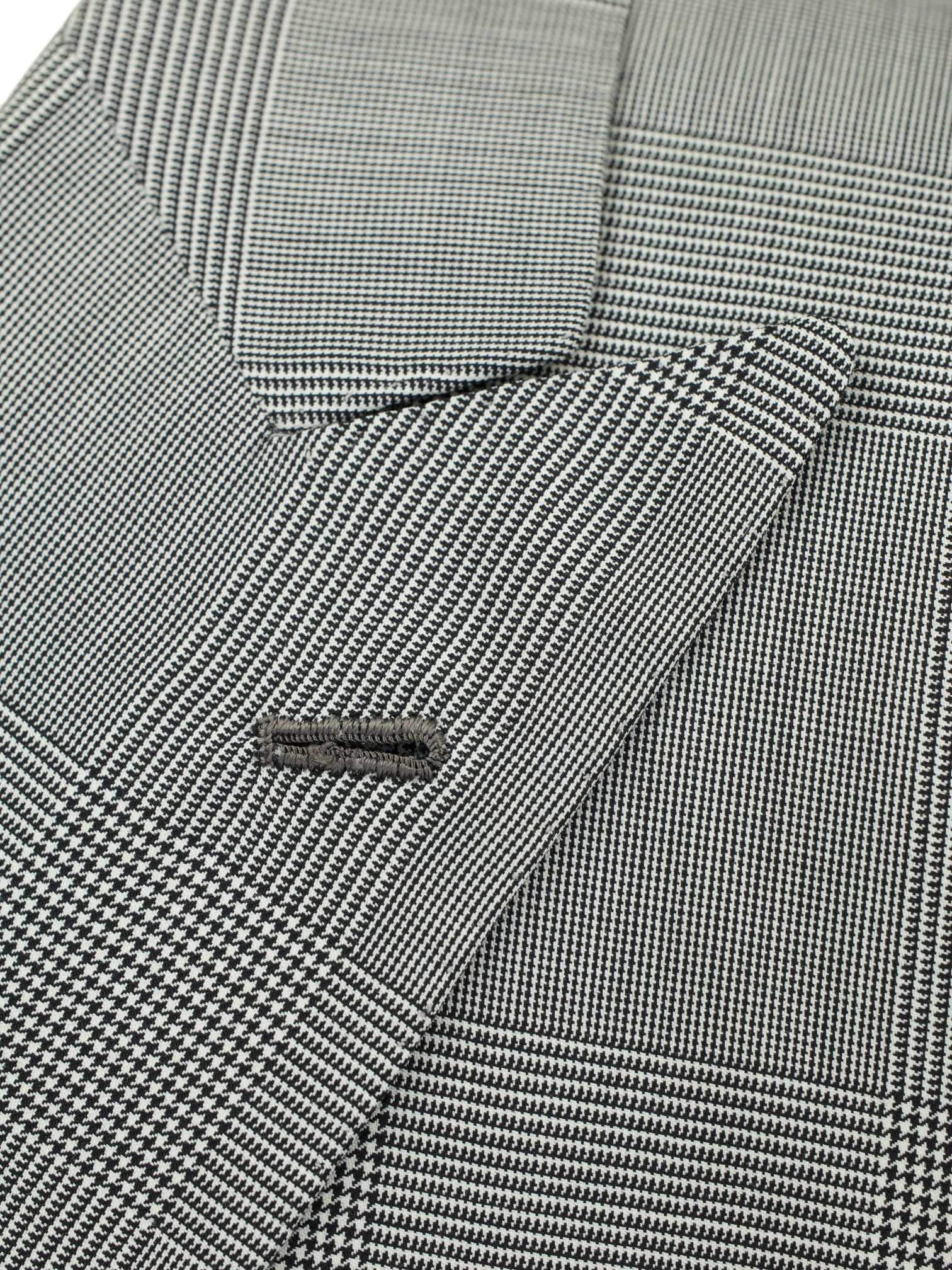
Neapolitan Buttonhole
The buttonhole preferred by tailors in Naples, Italy. The Neapolitan is a slightly shorter and thicker style of handmade buttonhole. It has a distinct opening at the end, which opens wider than any other buttonhole.

Double Breasted Closure
Contrary to popular belief, the double-breasted jacket originated as casual wear in the early 19th century, also known as the reefer jacket. It was considered very casual and was worn by people at sporting and national events.
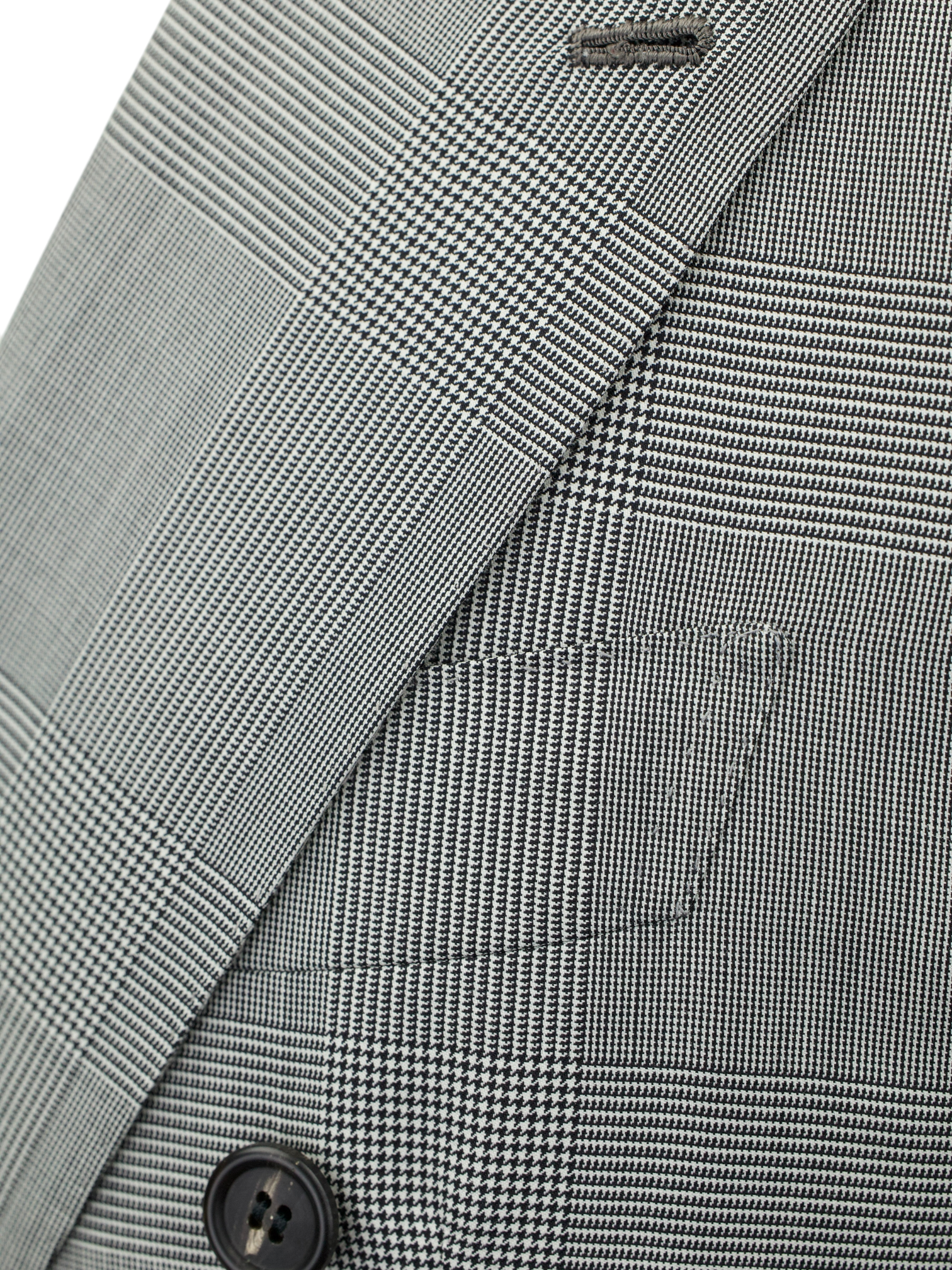
Barchetta Chest Pocket
The barchetta pocket is often thought to be a tailoring detail exclusively from Italy. The word “barchetta” is Italian for “little boat.” It describes how the pocket floats on the chest, gently angled upwards, like the bow of a sailboat.
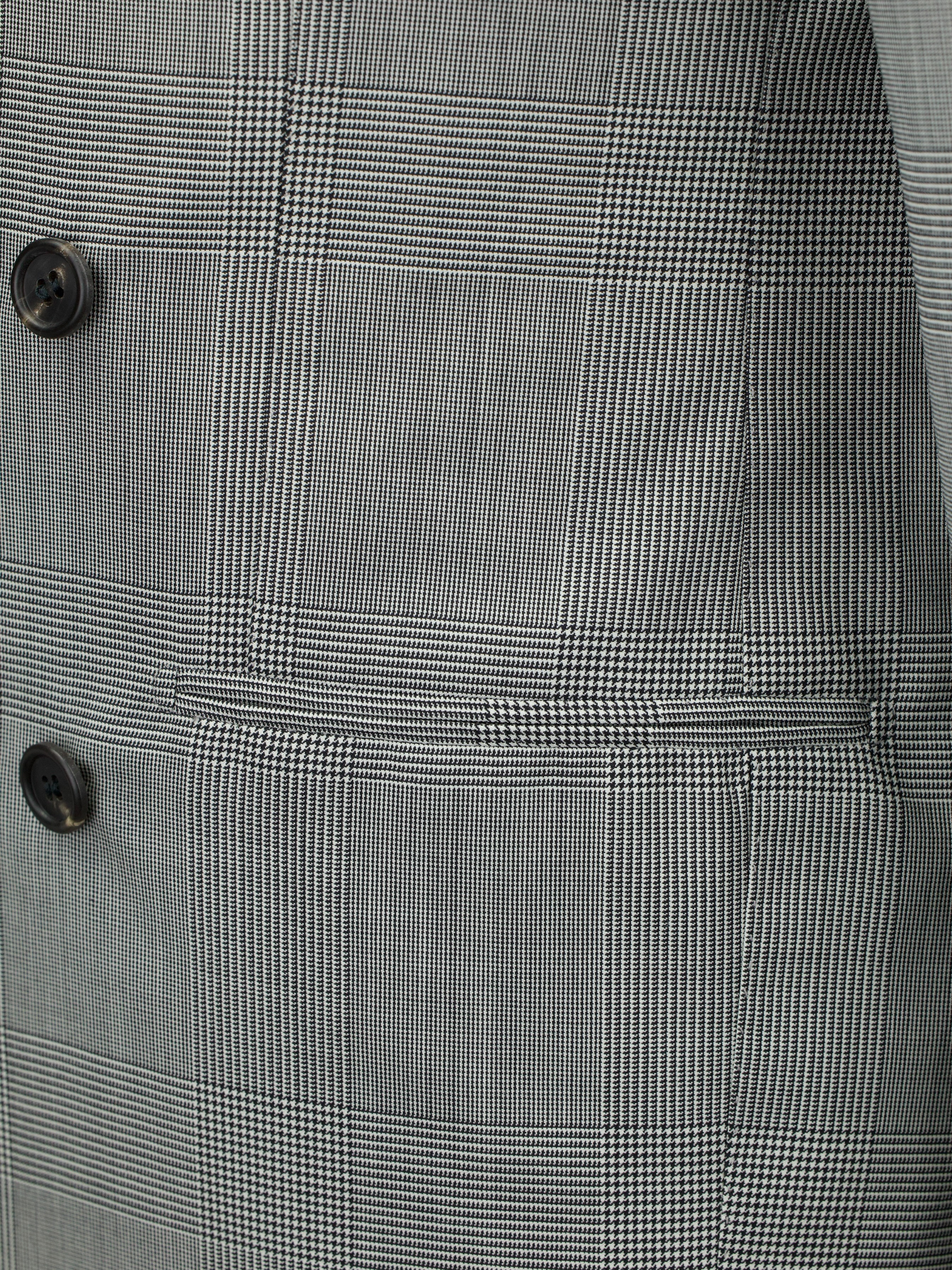
Neapolitan Darts
Neapolitan master tailors add two darts - think of them as pinched seams - to ensure the jacket’s body achieves a slim silhouette. The process, called mezzo punto riprese, is done entirely by hand.

Kissing Buttons and Handmade Buttonholes
Also known as stacked buttons or waterfall buttons, kissing buttons are associated with Italian tailoring as Italian tailors make their jacket sleeve buttons in the kissing style. In this style, buttons touch each other and overlap one another. Handmade buttonholes; Even this step, apparently the simplest, is treated with an abundance of detail. Attaching the buttons is a job that requires patience and must be completed to perfection.

Jetted Pockets
The first jacket pockets were sewn inside the lining or seams of garments, and are called “jetted” pockets. In their simplest form, they consist of little more than a slit. Suits that are the most formal, especially tuxedos, have no flap pockets altogether to give the piece a more streamlined look.
the details of
the trousers

Double Pleated Front
Double-pleat trousers are all about classic elegance. They were a staple in the 1930s and 1940s, an era known for its fuller, more comfortable styles. With two pleats, these pants provide extra room, especially around the hips and thighs, making them great for formal settings. They bring to mind the sophisticated styles of Hollywood icons like Cary Grant, who wore them with effortless charm. Even though slimmer fits have become more popular, double pleats remain appealing for those who appreciate traditional tailoring and timeless style.
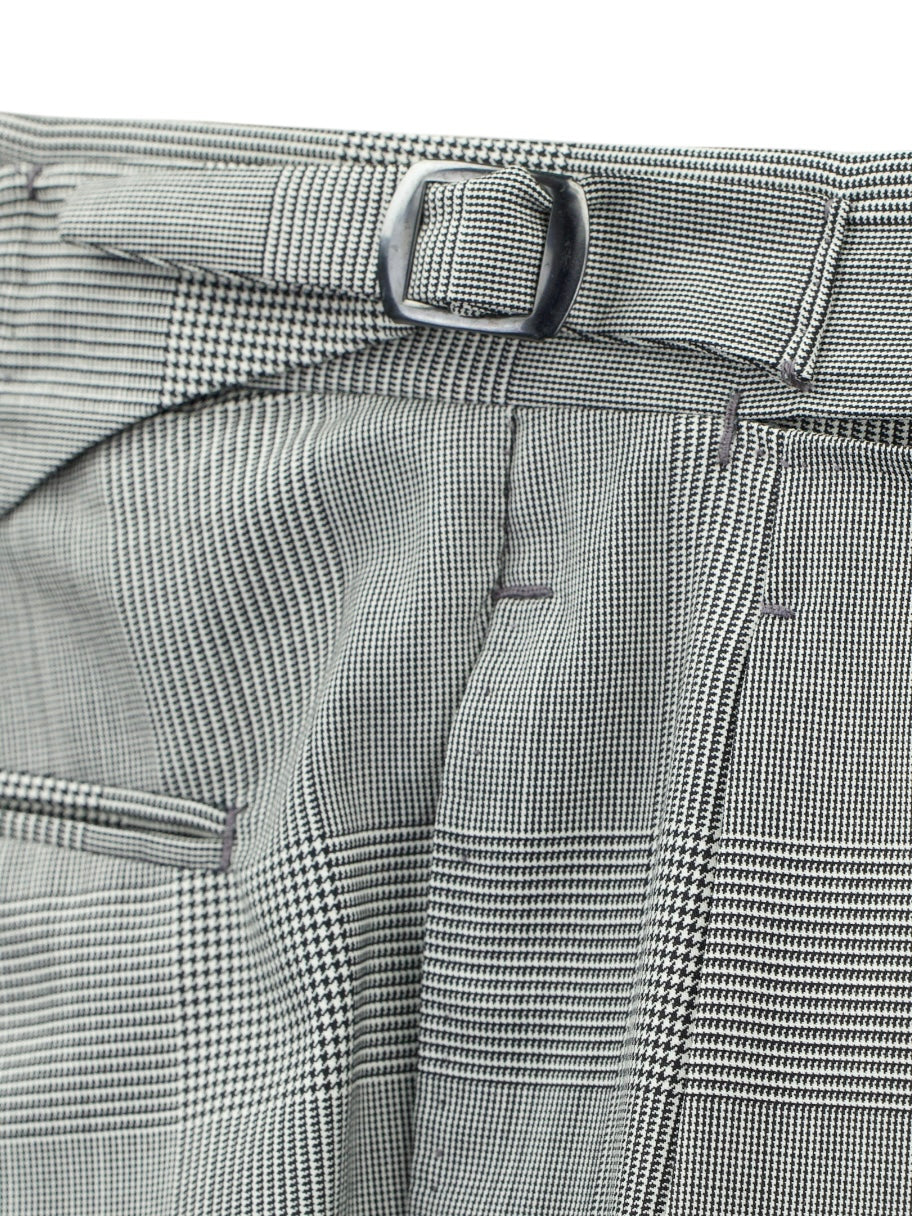
Side Adjusters
Side adjusters are a stylish alternative to belts, offering a clean look without the need for additional accessories. These adjusters are typically small buckles or tabs located on each side of the waistband, allowing you to tighten or loosen the trousers for a perfect fit. Popular in bespoke tailoring and high-end menswear, side adjusters provide a sleek and polished appearance. They are particularly favored in formal and semi-formal settings, as they maintain the silhouette of the trousers without the bulk of a belt.
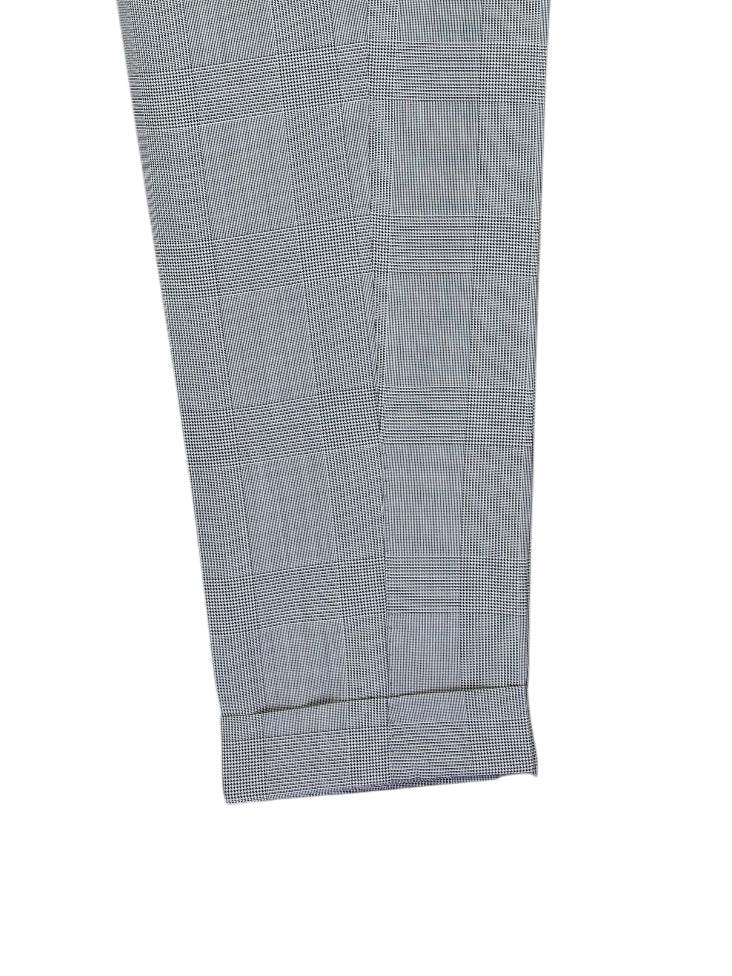
Turn-Up (Cuffed) Hem
The turn-up hem, or cuffed hem, is a classic style where the fabric at the bottom of the trousers is folded outward to create a visible cuff. This style originated with Edward VII in the late 19th century, who had his trousers tailored with cuffs to prevent them from getting muddy, sparking a trend among the fashionable elite. In the 1920s and 1930s, turn-ups became a symbol of wealth and sophistication, as having extra fabric was seen as a luxury. This association continued after World War II when wearing turn-ups subtly indicated affluence in an era of fabric rationing. Today, turn-up hems are a nod to their historical roots, offering a touch of classic elegance and enhancing the overall appearance of formal and tailored trousers.


size
48 IT / 38 US / Medium


 Curator's Description
Curator's Description Materials
Materials